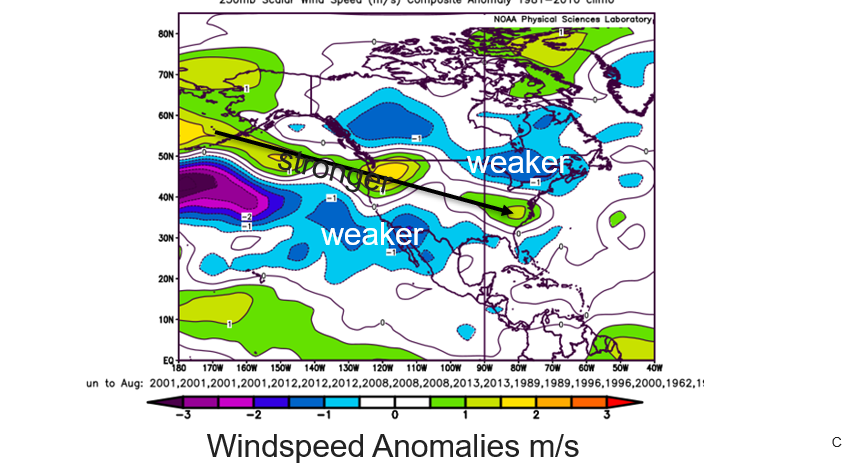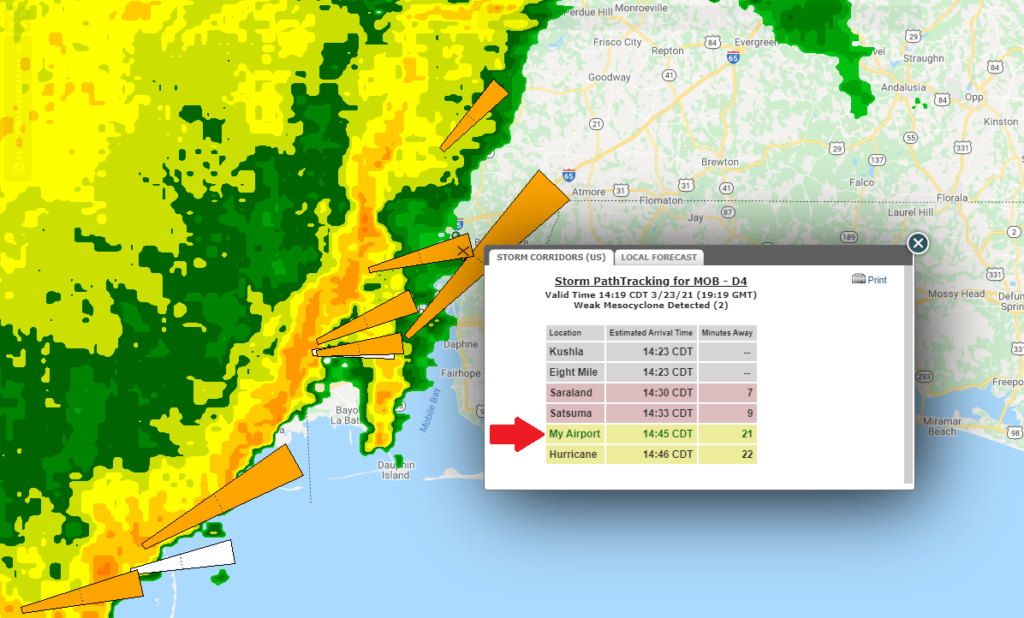Although winter is typically the season known for creating havoc in aviation, there are warm-weather situations that can affect airport, airline and helicopter operations. For example, severe weather threats across the central and eastern United States can bring many different weather phenomena into play, including hail, lightning, winds and even tornadoes, both in the air and at the terminal.
This spring has seen less severe weather than average, thanks to the cooler pattern across the central US. However, according to the DTN 2021 Spring Severe Weather Report, an uptick in severe weather is expected during the second half of May and early summer as the pattern across the central and eastern US trends warmer due to residual La Niña influences in the atmosphere.
La Niña years have historically produced more tornado outbreaks than usual. For example, the two most recent active tornado years were 2008 and 2011 during a La Niña pattern. In fact, it was during a La Niña spring that two super-cell thunderstorms produced large hail, strong winds and five tornadoes in the St. Louis area, including one ranked EF4 that hit the St. Louis Lambert International Airport. There were no fatalities due to early warning from the airport’s weather partner, good timing and quick thinking by airport operations staff.
Weather impacts for aviation
The seasonal report also analyzed potential impacts in the aviation industry. While clear air turbulence is a concern, the northern tier of the US also should be aware of the potential for stronger-than-average jet-stream winds, which will have an impact on aircraft range, fuel burn and performance time.

The stronger winds will result in higher fuel consumption than usual for late spring on east-to-west flights but may provide some fuel savings on flights in the opposite direction. There is also increased potential for wetter conditions in the Northwest, Northern Plains and Eastern Seaboard, which creates a heightened risk of low visibilities – a concern for airline and helicopter operations.
The report also highlighted weather risks to airport terminals, not only in the disruption of operations but also for crew safety. With severe weather – thunderstorms in particular – accurate, timely weather information is key for contingency planning around ramp closures or other actions to protect employees and passengers, equipment, facilities and aircraft. With the noise from aircraft and other equipment on the ramp, approaching storms can be difficult to hear, so personnel need external tools to monitor weather conditions and receive timely alerts.
High temperatures are often overlooked as a weather threat for crew. There is high confidence that summer will see average or hotter-than-normal temperatures across most of the country, particularly from the Plains westward. There is even a possibility that conditions could be favorable for a summer that is even hotter than forecast.
Extreme heat and humidity can create unsafe working conditions for ground personnel, including making equipment and the road surface dangerously hot to touch. High temperatures result in higher levels of fatigue, which causes higher incident and accident rates and, in the case of heat stress, can be deadly.
Weather insights increase confident decisions
With the forecast for severe weather, hotter-than-average temperatures and the pattern of increased tornadic activity following previous La Niña seasons, having the right weather tools can help aviation operators make confident operational and safety decisions. For example, having a weather tool that monitors the distance from a storm cell to an identified location provides the time it will impact operations, which supports planning and proactive action. The monitoring should include real-time data for lightning and issued watches and warnings for conditions like tornadoes, hail and high winds to help staff adapt in real time.

Using the Wet Bulb Globe Temperature (WBGT) instead of the heat index is a more accurate way to monitor heat stress. The WBGT is not a feature typically offered through free weather services but is available on some subscription services. Advanced notification of high temperatures and the WBGT can help operators plan work schedules that keep crew safe.
With a seasonal outlook that will challenge airport operations and a promising uptick in airport travel, planning for the months ahead and having the right weather tools today will lessen the impact on the aviation industry.



